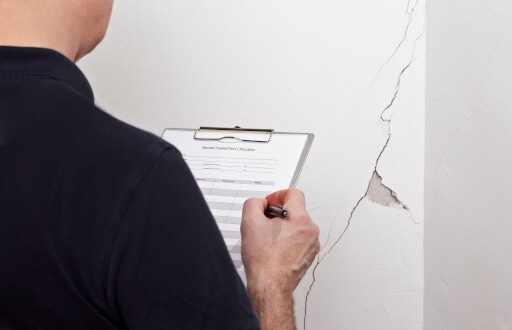Evictions aren’t pleasant for anyone. Removing a tenant from your property can be a long and tiresome process, from sending a notice to your tenant to filing an eviction in court. So, how long does the eviction process take? Typically, most evictions take one to three months to complete. However, the exact timeline can vary by state. From the moment a landlord issues a notice to vacate to the moment a tenant moves out, the timing depends on the type of eviction and the responsiveness of the tenant.
Reasons for Eviction
Evictions typically occur when the tenant violates the lease. For example, if a tenant refuses to pay rent, the landlord can file for eviction. This is known as a nonpayment of rent eviction. Other common reasons for evictions include failure to comply with the terms of the lease, damage to the property, and illegal activities on the premises. In most cases, landlords must provide written notice to their tenants before filing for eviction.
There's another type of eviction called an "eviction without cause." If, for example, your renters don't have a fixed lease but are instead renting month to month, you can ask them to leave at any time without cause, as long as you give them proper notice. Proper notice varies by state, but the average is 30 days. In this case, you'd send your renters a 30-day notice to vacate letter. Also, if the fixed-term lease is about to expire and you don't intend to offer a renewal, you can send a lease termination letter to your tenant.
Types of Evictions
There are two main types of evictions: formal and informal. Formal evictions require the landlord to go through the legal process, which typically includes filing a complaint with the court and holding a hearing. This type of eviction can take anywhere from a few weeks to several months depending on the state's laws and court schedule. Informal evictions, on the other hand, occur when landlords pressure tenants to leave without following proper procedures. This is illegal in most states and can result in legal action against the landlord.
Tenant Rights During an Eviction
Tenants have rights during an eviction process, regardless of whether it is formal or informal. They have the right to receive written notice before being asked to leave, as well. This notice must include the reason for the eviction, the date by which the tenant must vacate, and any steps that can be taken to fix the issue. Here are the three types of notices:
-
Pay or Quit notice – Landlords may send this announcement when a tenant has not paid rent. A Pay or Quit notice usually follows a late rent notice, a grace period, and a late rent fee. Upon receiving a Pay or Quit notice, tenants have three to ten days to pay, depending on the state. After the time limit ends, landlords can file for eviction.
-
Cure or Quit notice – Landlords can send this notice if a tenant violates other lease rules. For example, if you have a strict no-pet policy and your tenant adopts a dog, you may release a Cure or Quit notice. This notification warns tenants to “cure” the problem or face eviction. Tenants usually have 30 days to fix the issue before eviction proceedings begin.
-
Unconditional Quit notice – This notice is reserved for extreme violations, such as if the tenant causes acute damage or engages in illegal activity on the property. Once landlords send an Unconditional Quit notice, tenants must vacate the property immediately. This letter informs tenants of their required move-out date and does not give the tenant the option to fix the problem or stay. Because of this, most states do not permit unconditional quit notices.
If a tenant doesn’t fix the problem or vacate the property within the notice’s required time frame, landlords can legally begin the eviction process.
Step-by-Step Eviction Process
Though the timelines of eviction process vary by state, evictions for tenants with fixed leases follow the same steps if landlords file them with cause.
1. Send a Reminder
The first step in the eviction process is sending a preliminary notice. This notice serves as a tenant’s reminder to fix their lease violation. For example, if a tenant violates the building’s quiet hours, landlords can send a letter reminding the tenant of the noise policy. This reminder should point to the section of the lease agreement that covers the infraction, and it should also include how much time the tenant has to fix their behavior. The landlord usually determines this time limit. Following the grace period allowed in the notice, landlords can proceed with the eviction process.
2. Post a Quit Notice
If tenants do not comply with the reminder notice before the time constraint ends, landlords should send an official Quit notice via certified mail. Sending the notice via certified mail ensures you can verify when the tenant receives the letter. Before escalating the eviction to court, landlords must wait until the tenant fixes the problem or until the notice period expires. If a tenant complies with the notice, the landlord must cease all eviction proceedings. If a tenant does not comply, the landlord can continue with the intent to evict. The Quit notice stage could take up to 30 days, depending on if landlords sent a Pay, Cure, or Unconditional Quit notice.
3. File a Petition
Research the necessary procedure to file an eviction petition in your state. To begin the process, visit your local justice court and file an eviction petition. Ensure you complete and sign all legal forms correctly. Including copies of your lease agreement, the preliminary reminder, and the official quit notice with your application is paramount. Also include evidence such as camera footage, rent receipts, or email correspondence to support the lease violation claim. Once you complete the petition, submit all paperwork to your local justice court and pay the fee to file the eviction officially.
4. Serve the Tenant
After filing, you must send the tenant a copy of the eviction petition. Landlords cannot serve eviction documents to the tenants themselves. They must hire either a professional process server or an adult uninvolved with the eviction case. Once hired, the servers can “serve” the tenant through three services:
- Personal Service – occurs when the court delivers the petition copy to the tenant.
- Substituted Service – occurs when the court delivers the petition copy to someone over 18 who is living with the tenant. Courts may use a substituted service if the tenant is unavailable to accept the delivery themselves.
- Posting – occurs when the court leaves a copy of the documents in a secure and visible place near the tenant’s unit. Landlords must mail the documents via first-class and certified mail to ensure receipt of the documents.
The documents should include copies of the eviction petition and a hearing date for the eviction proceeding. Following receipt, tenants have a set number of days to reply to the petition or appear in court to contest it. The court dismisses the eviction case if the tenant pays their rent in full before the hearing date.
5. Attend the Eviction Hearing
At the eviction hearing, landlords and tenants must present evidence to support their claim or defense. Each claim or defense must have sufficient and substantial evidence to support it. The court will dismiss the eviction case if a landlord is not present for the hearing. The landlord will win the case by default judgment if a tenant fails to attend the hearing. Depending on the evidence presented during the case, courts may grant tenants the right to stay at a property or fix the issue to avoid eviction. Following the hearing, the landlord will know with finality whether the tenant can either remain on the property or whether they must vacate immediately.
6. Initiate the Move-Out Process
Landlords cannot remove a tenant until after winning the eviction lawsuit. If the court rules in your favor, the final step of the eviction process is to remove the tenant from the property. Following the hearing, courts will mandate the time the tenant has to vacate the property. As a landlord, managing your tenant’s move-out process is your job. Once your tenant vacates the property, you can then begin the journey of turning over the unit to a new tenant.
Screen your Next Tenant with Apartments.com
The eviction process is long, complicated, and expensive. It's difficult to predict if a tenant will be responsible, but making sure you screen your tenants carefully can help you find a renter you can trust. Apartments.com makes it easy to screen tenants, get the information you need, and find a qualified renter. We partner with TransUnion to provide you with screening reports for evictions, credit, and criminal history. Another feature you’ll find only on Apartments.com is support for co-signers, guarantors, and co-applicants. If you need more information to make a decision, you can request supporting documents from potential tenants directly on our platform. Get all the information you need to find the right tenant quickly and easily.
Frequently Asked Question
Does it cost to evict someone?
Yes, it does cost money to evict someone. Research your local and state laws to determine the exact pricing to file for an eviction, serve your tenant papers, and attend an eviction hearing.











